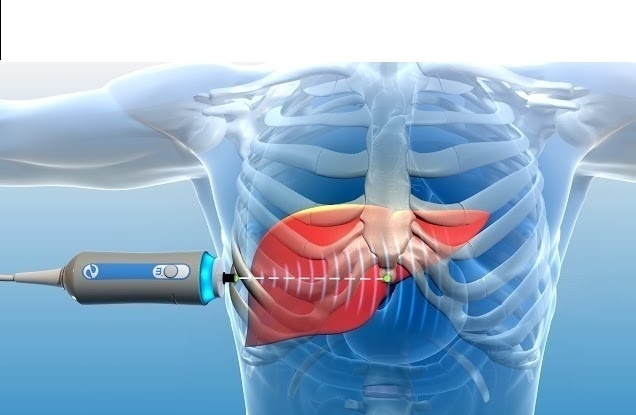Elastography
For patients with liver disease, the detecting an evolution towards fibrosis (scarring) and cirrhosis is essential. Fibrosis leads to a loss of liver function and to the development of cirrhosis, both of which accompany life-threatening developments. Normal follow-up and blood tests for patients with chronic liver disease do not distinguish among which patients have developing fibrosis and which have stable liver disease. Until recently, the only method to document this was to perform a series of liver biopsies. Biopsying the liver is, however, a rather invasive test that also requires an outpatient admission. In addition, a liver biopsy only represents 1/50,000 of the liver as a whole, and so is not always reliable.
The technique of elastography is based on the determination of the elasticity of liver tissue, which is a reliable marker of the grade of fibrosis or scarring. The elasticity is determined by using the reproduction rate of a shock wave that a probe emits inbetween the ribs, at the level where the liver is located. It is a very simple test that only takes a few minutes and is completely painless.

The Digestive Centre has a Fibroscan® and a Shearwave elastography machine. These techniques are used instead of liver biopsy to determine the severity of liver fibrosis in liver patients.
Preparation and course of the procedure
You need to be fasting for at least four hours before the test. The test only takes a few minutes. You will lie down on your back on the examination table. Your abdomen will be uncovered on the right side, up to above the area of the liver. The physician will place some gel on the belly and on the ultrasound probe. The probe will be placed again the skin on the belly in order to emit the pressure waves. The pressure waves will feel like little tickles on your skin and will be completely painless. At least ten measurements are taken in order to obtain a reliable result.
Centres and specialist areas
Centres and specialist areas
Latest publication date: 16/05/2024
Supervising author: Dr Monsaert Els




